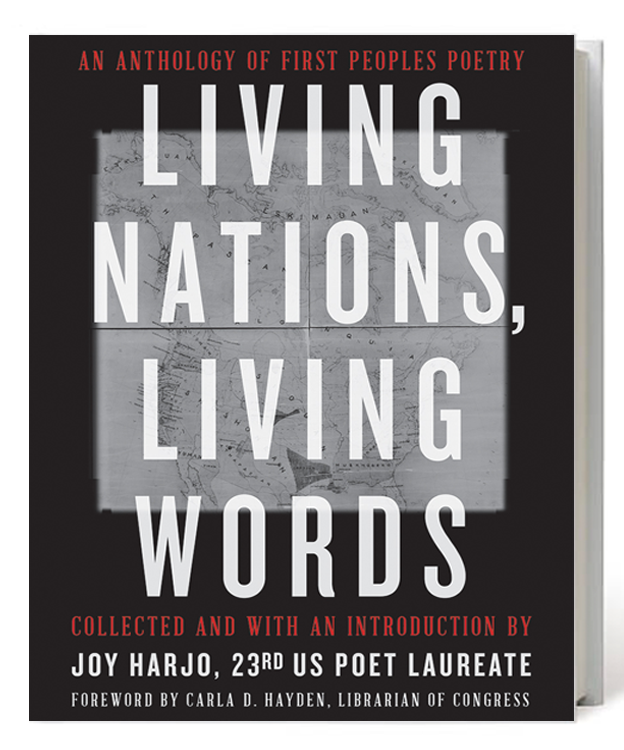Joy Harjo Maps Native Nations Through Poetry
A review of "Living Nations, Living Words"
 When many Native American children were sent to government-run boarding schools, they suffered in a prison of language and culture. Among other assimilation tactics, they were often taught poetry as a means to learn English. Now, US poet laureate Joy Harjo celebrates that form and maps it "with Native Nations poets and poems" in her signature project, Living Nations, Living Words (W.W. Norton & Company, 2021). Harjo's mapping project is intended to rectify the "nearly nonexistent" presence of Indigenous storytelling in the United States. "As the first Native Nations poet laureate, I was aware that Indigenous peoples of our country are often invisible or are not seen as human," she writes.
When many Native American children were sent to government-run boarding schools, they suffered in a prison of language and culture. Among other assimilation tactics, they were often taught poetry as a means to learn English. Now, US poet laureate Joy Harjo celebrates that form and maps it "with Native Nations poets and poems" in her signature project, Living Nations, Living Words (W.W. Norton & Company, 2021). Harjo's mapping project is intended to rectify the "nearly nonexistent" presence of Indigenous storytelling in the United States. "As the first Native Nations poet laureate, I was aware that Indigenous peoples of our country are often invisible or are not seen as human," she writes.
The 47 contemporary poets in this anthology are a vibrant balm for the Native experience of erasure. Matriarch Ofelia Zepeda writes in O'odham, replicating a rhythmic call-and-response pattern that emphasizes the tribal expression "there is no truth that it will rain." Deborah Miranda of the Ohlone–Costanoan Esselen Nation unfolds a list of the toxic effects from an invented element in "Indigenous Physics: The Element Colonizatium," then cleverly redirects to the four "Indigenous elements": Story, Dance, Song, and Dreaming.
The anthology is accompanied by an extended online collection in the American Folklife Center of the Library of Congress, which provides an interactive map and links for each author's poem, including an audio recording of the poet reading and giving an insightful commentary. Harjo offers readers an entryway into the world of Indigenous poetics and the significant literary contributions of this country's first inhabitants. Like any road map, it engages travelers, suggests scenic routes, and calls attention to landmarks to deepen the project's themes of visibility, persistence, resistance, and acknowledgment.
This article appeared in the Summer quarterly edition with the headline "Storied Geographies."
 The Magazine of The Sierra Club
The Magazine of The Sierra Club



